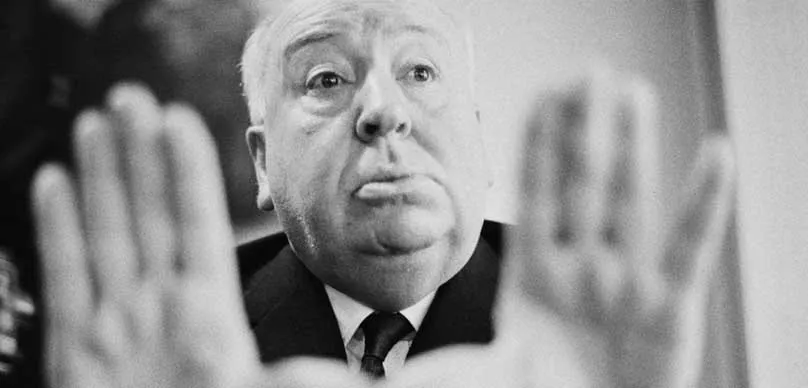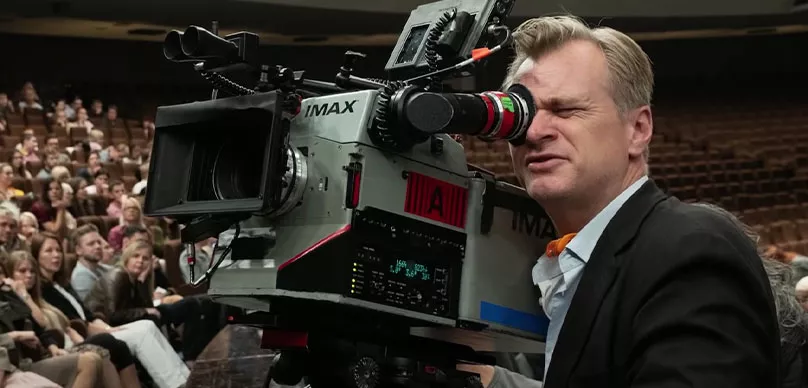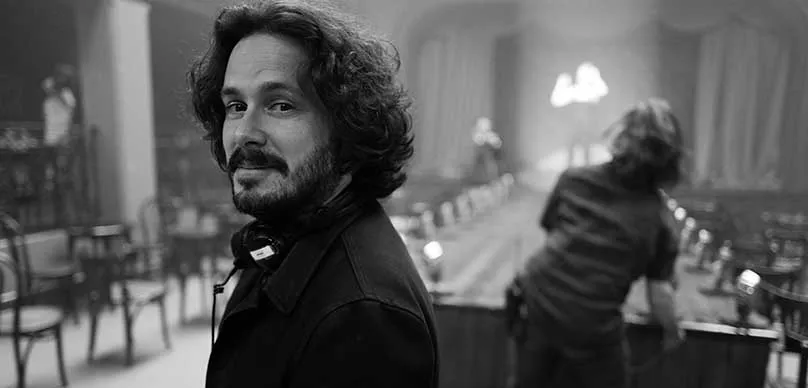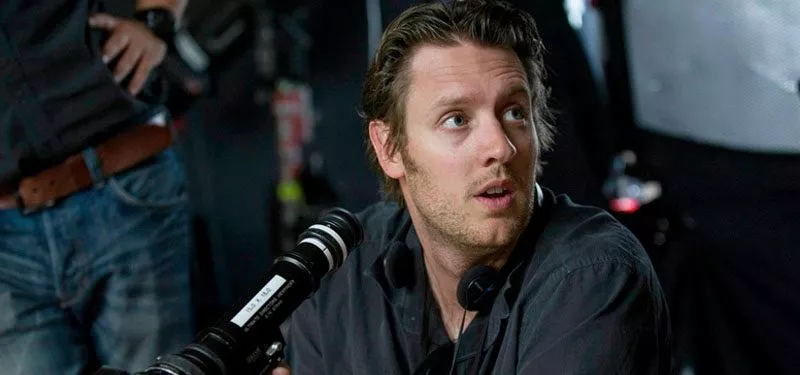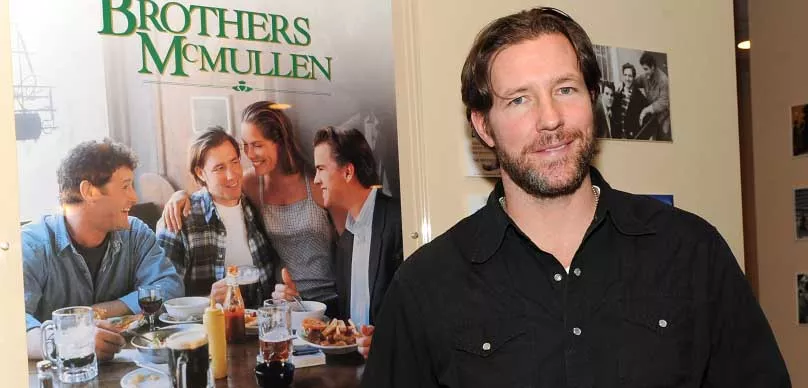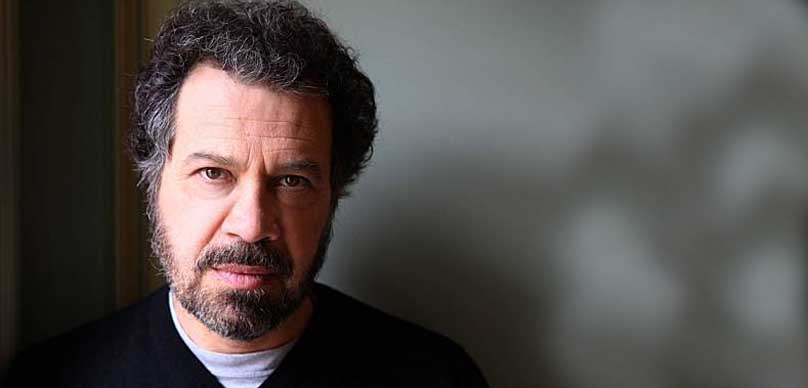Although you may not have seen any of his movies (a situation which you seriously need to rectify), you’ve certainly heard the name, Alfred Hitchcock. He is recognized as one of the great minds of cinematographic history and is even hailed as the Master of Suspense.
Docu-series bringing the forgotten skills of Alfred Hitchcock to today’s pro filmmakers, film students, and the wannabe videographer. Experts examine each of the 20 episodes of television that Hitchcock himself directed.
WATCH Hitch20: Exploring Hitchcock’s 20 Works of TV on Indie Film Hustle TV
But what was it about this icon that made his movies such a huge success? What was the secret he used in creating suspense in his movies? How does Hitchcock manufacture suspense in his films?
In this article, we’ll take a look at some of the methods Hitchcock employed in creating shock and suspense in his movies.
Before we can start analyzing how Hitchcock created suspense in his movies, let us first look at the difference between shock and suspense. To quote the man himself, he once said
“It is indispensable that the public is made aware of all the facts involved. Otherwise, there is no suspense.”
This means that with suspense, you are aware of what’s going to happen, but the anticipation is what makes it so nerve-racking. Whereas with shock, there’s no expectation of what’s to happen. In order words, you’re caught pants down.
Without going on much longer, let’s look at some of the ways Alfred Hitchcock has created suspense in his movies.
1. Hitchcock Leading Ladies
One of the more interesting techniques to create suspense Hitchcock employed was in his leading ladies. Other they were mostly blonde, they all went against most of the female stereotypes popular in the 1940s up to the 1960s.
While the most famous blondes of that era never appeared in his movies, there is no denying that his female leads were sexy in their right. Like most female leads, they were sexy but in a subtle way that combined fashion with fetishism.
They were also capable of mesmerizing their male counterparts who were most times handicapped either physically or psychologically. However, the women in Hitchcock’s movies were not just decorative pieces on the arms of their male leads; they were true lead characters.
This dynamic nature of his female leads and their willingness to take action (Madeline jumping off the church tower in Vertigo easily springs to mind) is probably what created suspense.
You never know what to expect. One minute you’re being seduced by a blond bombshell on screen and the next you see them jumping off towers.
2. Making Use of Subjectivity
Hitchcock often made use of subjectivity for a lot of voyeuristic purposes. Hitchcock’s characters had the uncanny ability to mimic the movie audience by a basic instinct to ogle an unassuming subject.
But this technique is not one of Hitchcock’s creations and in fact named Lev Kuleshov as his inspiration. This technique is known as “The Kuleshov Effect.”
By rhythmically repeating this technique, Hitchcock was able to cultivate suspense in a lot of his movies. He periodically switched from the ogler to the ogled which led to building the action.
What resulted from this was a feeling and anticipation of utter helplessness as you watch the character observe a dangerous situation unfold and you see he or she proved incapable of preventing the spectacle.
In the movie Rear Window, Hitchcock can build the suspense the audience feels by building the one felt by the character. This way the audience feels like they are one with the character or are sharing something personal and intimate together.
3. Information to Create Suspense
Hitchcock believed that information and suspense went hand in hand, he believed in showing the audience what the character was unaware of. If something was going to harm your character in the future, show it at the beginning scene.
Then you let the scene play like there’s nothing wrong. From time to time, remind the audience of the looming danger. This way you continuously build up the suspense level. Remember, the character is unaware of the coming danger.
One method Hitchcock used in increasing the suspense level was by having the camera playfully roam around looking for something or someone suspicious. This way, the audience not only feels like they’re involved in solving the mystery, but they also feel like they’re one step ahead of the character.
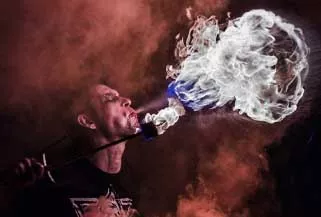
Need Sound Effects for your short or feature film project?
Download 2000+ sound effects designed for indie filmmakers & their projects for free.
4. Montage
Another method Hitchcock applied was in dividing action into a series of close-ups that were then shown in succession. This is a basic technique in cinematography. However, you should not make the mistake of thinking it is the same as throwing random shots together as you would see in a fight sequence.
This is a more subtle approach. First, Alfred Hitchcock starts with a close-up of a hand, then an arm, then you’ll see a face, followed by a gun falling to the floor, all of which are tied together to tell a story.
This allowed him to portray an event by showing different pieces of it and gaining control over the timing. You can also use this method to hide parts of an event from the audience so that their mind is engaged.
5. Keeping the Story Simple
The confusing and overly complex story requires the audience to memorize quite a bit. It’s hard to squeeze out suspense from stories like that. The key to Hitchcock’s raw energy in his movies is the simplistic linear stories he adopts.
They are usually easy for the audience to follow and grasp. Your screenplay should be streamlined, so it offers the highest dramatic impact.
Abstract stories tend to bore audiences. This is why Hitchcock mostly used crime stories that were filled with a lot of spies, assassinations, and people constantly running from the police. Plots like these aren’t necessary for all movies, but they are the easiest to play on fear.
6. Avoiding Cliché Character When You Create Suspense
Clichés are boring and easy to predict. When you create suspense the best characters are those with hard to predict personalities, make decisions on a whim instead of what is expected from the previous buildup. Audiences tend to find such characters much more realistic which makes it easier for something to happen to them.
What is a MacGuffin?
Many of you might have heard of the term “MacGuffin” floating out there in the ether, but what the is it? The answer is not that straightforward. Legendary director Alfred Hitchcock coined the phrase back in the days of his film 39 Steps and used it throughout his career.
When asked what a MacGuffin was Hitchcock told this story:
A man asks, “Well, what is a MacGuffin?” You say, “It’s an apparatus for trapping lions in the Scottish highlands.” Man says, “But there are no lions in the Scottish highlands.” Then you say, “Then that’s no MacGuffin.”
According to Wikipedia:
In fiction, a MacGuffin (sometimes McGuffin or maguffin) is a plot device in the form of some goal, desired object, or another motivator that the protagonist pursues, often with little or no narrative explanation. The specific nature of a McGuffin is typically unimportant to the overall plot. The most common type of McGuffin is a person, place, or thing (such as money or an object of value). Other more abstract types include victory, glory, survival, power, love, or some unexplained driving force.
Spoiler
Hitchcock’s Filmmaking Techniques
It’s the early 1900s something extraordinary is about to happen in London, a quirky kid will stroll down the street and introduce himself to a film company. This small act of bravery will change the future of cinema. His name is Alfie. You’ll soon piece together influences from German expressionists, Soviet montage theorists and British macom plays to become the most prolific director in film history. For six decades, he will actively shape the cinema art form, as it transforms from silent to sound to color.
But what’s the big deal about Alfred Hitchcock? Why are his films considered to be so significant?
Sometimes you find that film is looked at, solely for its content without any regard to the style or manner in which the story is told. And after all, that, basically is the art of the cinema.
Alfred Hitchcock was a director with one thing in mind, the audience. Everything he put on the screen was designed specifically to make your movie experience enjoyable. It was all designed to manipulate how you feel part of a unified strategy to draw you in to what the characters care about, to form an emotional connection. Just like a painter uses brushstrokes to convey feelings. Hitchcock painted the screen with actors faces. He said, it’s all the little nuances of expression that tell you what the character is feeling. They must be ever so slight.
Well, my idea of a good actor is somebody who can do nothing well. He trained his actors in minimalism, having them keep a blank expression on their face. This was so he could use the camera to create the emotion. Hitchcock’s approach was to avoid simply capturing a conversation on film, which he referred to as photographs of people talking. Instead, he would watch the listening session report. It’s the reaction to what’s being said and isn’t said that brings the audience in. Hitchcock said people don’t always express their inner thoughts to one another. A Conversation may be quite trivial, but often the eyes will reveal what a person thinks or needs. With the camera, he used differences in proximity to the actor’s face to get the emotional impact he wanted. He often called this orchestration. Each close up is saved for moments of emphasis. He can reveal nervousness or suspicion. Behind the actor shows denial. The side shows guilt, a high shot is objective or supernatural. wide shots convey emotional distance between characters. The closer you get to an actor’s face, the more emotion you’ll get.
I know every shot and every angle. So I’ve become in a sense when I’m shooting the picture, or maybe not so good as a conductor, conducting an orchestra without a score.
Tracking away can make a situation feel beyond anyone’s control. Using a dolly grip I Tracked from wide to close can find a hidden secret. The cutting from wide to close can give the audience a feeling of shock if it weren’t music, it would be tremulous on the violin, and suddenly a brass instrument which is to be closer
while his camera orchestrates emotion. Hitchcock controlled the timing of events along the axis of shot frequency, or how long a shot stays on the screen before cutting away. Staying on a character’s reaction and following them across the room can emphasize in emotion moving the camera to the next shot instead. Cutting to it holds on to tension. A long stationary camera shot allows opposing forces to converge within the screen space. Fast editing is something even more impressionistic for Hitchcock, fragmenting a moment into converging perspectives can stretch out a fast event. It can also evoke something not seen on the screen in the audience’s imagination.
The camera becomes Hitchcock’s instrument, and its succession of shots. A Symphony you are transferring the the the the menace from the screen into the mind of the audience. From his beginnings in silent film, Hitchcock believed in visual storytelling. In those days, there was no voice track and the dialogue had to be shown with printed words on the screen. filmmakers learned to tell the story with the camera so they could minimize the number of titles that would interrupt the action. He said when we tell a story in cinema, we should resort to dialogue only when it’s impossible to do otherwise. His roving camera uncovers objects in the room that add up to an idea.
In rear window we know Jeffries is injured and confined to a wheelchair on a hot day, and that he’s a war photographer from a magazine. In other words, we don’t have pages to fill, or pages from typewriter to fill, we have a rectangular screen. In a movie house, Hitchcock used hands, feet and objects as words in his cinematic language planted on the ground feet to give us a sense of place and safety are often a lack of safety. marinis feed wobble when she loses control of North by Northwest, the villains feed fall over when he gets shot. Fi can also be a dramatic introduction to a character that will make an important impact in the story. And feed can reveal personality differences between two characters in lifeboat feet become involved in romantic embrace. Hands can show anxiety and shock.
And most importantly, they interact with objects. Objects are everything in Hitchcock’s storytelling language, that the primary way that hands can drive the plots and interact with the story world. Often these objects are evidence of a crime and carry with them emotional guilt, such as the frozen leg of lamb and lamb to the slaughter.
As curls hands touch and hold the murder weapon in revenge, we can feel his uneasiness. And then by adding eyes to those hands, feet and objects, each Cox builds out a character’s thought process, piecing together what he called a visual sentence. With one simple sentence Sam’s he’s a burlap sack. By adding a second thing for him to look at. Hitchcock could expand the idea that he wants to put the body into the burlap sack. You can make him look at one thing and look at another he said without speaking. You can show the mind at work comparing things. There’s complete freedom, it’s limitless. your jaw
close up of him. Then you show what he is looking at. Then you cut back to the close up and you see his reaction.
In the 1920s Russian director lev Kula chab discovered what became known as the coolish of effect where an actor’s face seems to change emotion based on the shots around it. Hitchcock built upon this phenomenon and wove it into his visual language. Watch closely the reaction shots from Jimmy Stewart and rear window. In this version, were showing him looking at Thor Wald scolding a dog.
Now we can replace the shot of the dog with Miss torso. Same reaction shot of Jimmy Stewart suddenly we perceive his thoughts differently. That’s the power of cooler shove. The emotion is portrayed less by acting and more with what Hitchcock called Pure cinema. That’s probably all you ever hear about Alfred Hitchcock that he’s the master of suspense. But how did he do it? In order for suspense to work, the character on screen had to be an everyday person. He often described it as an innocent man pulled into a bizarre series of events.
The audience is terribly worried because the same thing can happen to them. He puts this person in motion, running from something hiding from something, and I know what coming next. And I said, Do you and therefore that’s the avoidance of the cliche, automatically. They’re expecting the cliche, and I have to say, we cannot have a cliche.
And despite common misconception, putting suspense into a dark, creepy environment is not necessary. Hitchcock settings tend to bring crime out into the open, they become a functional part of the suspense. In North by Northwest the flat, empty terrain becomes a trap with no place to hide the crop duster, a normal part of this farmland becomes an imminent threat. What seems to be the trouble captain.
Breaking the cliche also applies to characters. Hitchcock’s criminals tended to be upper class citizens whom you’d never suspect. And the policemen and politicians are usually the bumbling fools, the innocent are accused and the villains get away with everything because nobody suspects them. He has to be an attractive man. He is not a murderer, in the sense of a fiction murderer, where the tendency would be to make him look sinister, and you’d be scared of him. Not a bit he had to be charming, attractive. if he weren’t, he’d never get near one of his victims.
To further stir things up. Hitchcock would often tricked the audience into following the wrong person. He said the easiest way to worry people is to turn the tables on them. Make the most innocent member of the cast the murderer, make the next door neighbor a dangerous spy. Keep your characters stepping out of character and into the other fellows boots. Creating this feeling of unpredictability makes the situation ripe for suspense.
But suspense is a dimension above that linear story. For Hitchcock. It’s the way the storyteller involves that the audience manipulates their expectations plays with their senses. That’s the root of suspense. A central fact is to get real suspense, you must let the audience have information. Research into his works has revealed a three step suspense structure. First, the protagonist has a secret hidden from the other characters.
Hitchcock gives us special access to these secrets, so that we’re seeing private things that we wouldn’t see in real life. The Secret tends to evoke basic feelings from childhood, like the fear of getting caught. The Secret could be a dead body, or stolen money, or even brake fluid leaking out of a car. It could be someone needing to be rescued like Paul in four o’clock. Once the audience is primed with a secret, Hitchcock then creates a series of close calls to tease the secret almost getting out. As the bumbling bystanders get closer to the secrets.
The audience begins feeling a delightful anticipation. We feel it as the doctor steps near the note from Anthony and he didn’t say anything that might give you an idea of where he went as the maid starts mopping while Marty sneaks away with stolen money and the police will make an appearance. They don’t really suspect anything. They just happen to be there to make Marion crane nervous. This is how Hitchcock reels in the audience. As the helpless character on the screen is pressured into fear. Audience empathy rises, and suspense rises.
The body almost gets discovered the stolen money almost gets found. And when a victim needs to be rescued, someone almost stumbles upon them, but then doesn’t notice. It’s a playful dance, teasing the audience. And just like a gambler gets more addicted when he almost wins believing he’s on a winning streak. The suspense viewer gets addicted to watching the movie. Now let’s take the old fashioned bomb You and I sit in talking, we’ll say about baseball, tell the audience at the beginning that under the table, show it to them. There’s a ball. And it’s gonna go off in five minutes.
We talk baseball, what are the audience, if they don’t talk about baseball, that a bomb under there, get rid of it. Or they’re helpless, they can’t jump out of their seats up onto the screen and grab hold of them bombings right down, putting the audience into this helpless situation where they want to reach in and change the events on the screen. It’s a skill that few directors have.
And the audience actually feels Hitchcock’s presence manipulating events, and the audience becomes actively involved in a game with the director. But once suspense is created, it must be relieved. Hitchcock said, we have to fool the audience. They think we’re going in one direction, we must have a twist in the end, just like a magician revealing that the coin is in the other hand, a sudden surprise comes out of nowhere and gives you an outcome you didn’t expect a twist through the mill lightly. You must relieve with a bomb must be found and quickly thrown out of the wind. And it goes off out there and the audience are relieved.
filmmakers today who strive to be more like Hitchcock often think suspense is everything they need to know. The fact is, suspense is nothing without tension. tension is different from suspense in that it’s an immediate gripping feeling as you’re watching a film. It’s the series of details that add up to an overall impending event. In a way, tension is what keeps this man’s feet planted firmly on the slack wire. But suspense is the impending chance that he might fall off. Hitchcock believe that tension can be dissipated with anything vague or complex. If the plot was hard to follow where the characters look too much alike. This could cloud the audience’s focus. He said blurred thinking is detrimental to achieving suspense. One of the fatal things in all suspense is to have a mind that is confused. Otherwise the audience won’t emote.
They believed everything in a story must be simplified to offer maximum dramatic impact. As he said, What is drama after all, but life with the dull bits cut out? For Hitchcock, the path to increasing tension included making the details as realistic as possible.
And I’ve always taken great care to be accurate in all detail.
No matter how fantastic the situation might be. And that is the most important moment when the man is buying a hat in the store in bonds street when the gun is thrust into his ribs. You see, it’s the juxtaposition of the norm of the accurate average against the fantasy.
The next level of detail is sound, adding a deeper sense of reality to the flat image on the screen. Hitchcock soundscape soundscapes were authentic. But sometimes he would make things silent to keep a secret from the audience, or he could exaggerate specific sounds for dramatic purposes. In his TV episode The horseplayer the sounds of rain dominates the scene so we soon understand exactly why this church needs to raise money. In most close call scenes, Hitchcock wants us to hear everything the characters hear. That way we can judge how close Marnie is to getting caught.
Notice there’s no music is can’t believe that music gets in the way and even dissipates tension. Music pulls our minds away from the reality of the scene, and more toward a fantasy. Often, Hitchcock would choose to add music from within the setting to avoid music score. This music tended to be comical, almost mocking the plight of the character was a counterpoint of sound, they shouldn’t make the same mistake. I’ve always believed that the voice should never make the same statement that the faces making.
Now there was a girl says I’m happy, and she’s got a happy expression, you’re saying the same thing twice, once with sound around with a visual shall be counter pointed, increasing tension with detail and sound, gave his films a hyper present clarity in the moment. But just like a roller coaster, once tension was created, had to be rhythmic with ups and downs to relieve the audience. He said, If you stretch it out too long, they’ll start to giggle. They’ll relieve the tension themselves if you don’t do it for them. And that was Hitchcock’s genius. He found that creating laughter was the best way to balance tension. Every film I make is a comedy he said, even considered psycho a practical joke.
You must have a basic sense of humor about because that’s what you’re doing. You’re doing it deliberately to scare people. And after all, there’s no difference between the my mating cycle to scare people with tongue in cheek, shall we say? Then a mother who says boo to scare three months old baby.
Hitchcock often inserted humor into dark situations by shifting the focus to a character that doesn’t know what’s going on. He often referred to this technique as understatements, where an aloof person focuses on something comically small instead of the more chilling situation at hand.
That don’t work. If we’re designing the film, I’m sitting with a riot. And you say, well, wouldn’t it be fun to kill them this way or that way? And then you say, well, this scene will make them scream. So you do it with a self of lushness. Show him and no different to the man who’s driving the males in that scaffolding, who’s making the roller coaster.
Even though he was all about clarity and detail, Hitchcock believed that film was different to a novel or play because of the emphasis on visual storytelling. It was more like a daydream where facts don’t matter. Hitchcock found that certain aspects of the plot could be minimized or eliminated entirely. This gave rise to his belief in a suspense device he called the MacGuffin, the MacGuffin is the thing that the spies are off, but the audience don’t care.
Simply put, the MacGuffin is nothing. It can be anything. The only reason for the MacGuffin is to serve a pivotal reason for the suspense to occur in torn curtain. It’s a secret physics formula that makes escaping Germany dangerous. In marny, it’s the color red, a psychological trigger of anxiety for Marnie, in Dial M for Murder. It’s the piece of evidence that can implicate Tony.
But we don’t care about the key. We just care if the inspector can cause him to slip up. I mean, what’s Van Damme up to? Oh, you could say is a sort of import or export, of what? Oh, government secrets perhaps.
And of course, the critics had a field day with this. They often claimed his films didn’t have much substance. There was no content.
When I say that I’m not interested in content rage would be the same as a painter, worrying about whether the apples that he’s painting, or whether they’re sweet or sour, who has it his style, his manner of painting them. That’s where the emotion comes from.
Alfred Hitchcock directed over 50 motion pictures and 20 television episodes, from the silent films of the 1920s all the way up into the 1970s. A lot has changed even since then. But hopefully, these classic Hitchcock cinema techniques will live on and continue to be used by filmmakers to bring frightening stories into the minds of the audience.
Spoiler
Hitchcock’s Filmmaking Techniques
It’s the early 1900s something extraordinary is about to happen in London, a quirky kid will stroll down the street and introduce himself to a film company. This small act of bravery will change the future of cinema. His name is Alfie. You’ll soon piece together influences from German expressionists, Soviet montage theorists and British macom plays to become the most prolific director in film history. For six decades, he will actively shape the cinema art form, as it transforms from silent to sound to color.
But what’s the big deal about Alfred Hitchcock? Why are his films considered to be so significant?
Sometimes you find that film is looked at, solely for its content without any regard to the style or manner in which the story is told. And after all, that, basically is the art of the cinema.
Alfred Hitchcock was a director with one thing in mind, the audience. Everything he put on the screen was designed specifically to make your movie experience enjoyable. It was all designed to manipulate how you feel part of a unified strategy to draw you in to what the characters care about, to form an emotional connection. Just like a painter uses brushstrokes to convey feelings. Hitchcock painted the screen with actors faces. He said, it’s all the little nuances of expression that tell you what the character is feeling. They must be ever so slight.
Well, my idea of a good actor is somebody who can do nothing well. He trained his actors in minimalism, having them keep a blank expression on their face. This was so he could use the camera to create the emotion. Hitchcock’s approach was to avoid simply capturing a conversation on film, which he referred to as photographs of people talking. Instead, he would watch the listening session report. It’s the reaction to what’s being said and isn’t said that brings the audience in. Hitchcock said people don’t always express their inner thoughts to one another. A Conversation may be quite trivial, but often the eyes will reveal what a person thinks or needs. With the camera, he used differences in proximity to the actor’s face to get the emotional impact he wanted. He often called this orchestration. Each close up is saved for moments of emphasis. He can reveal nervousness or suspicion. Behind the actor shows denial. The side shows guilt, a high shot is objective or supernatural. wide shots convey emotional distance between characters. The closer you get to an actor’s face, the more emotion you’ll get.
I know every shot and every angle. So I’ve become in a sense when I’m shooting the picture, or maybe not so good as a conductor, conducting an orchestra without a score.
Tracking away can make a situation feel beyond anyone’s control. Using a dolly grip I Tracked from wide to close can find a hidden secret. The cutting from wide to close can give the audience a feeling of shock if it weren’t music, it would be tremulous on the violin, and suddenly a brass instrument which is to be closer
while his camera orchestrates emotion. Hitchcock controlled the timing of events along the axis of shot frequency, or how long a shot stays on the screen before cutting away. Staying on a character’s reaction and following them across the room can emphasize in emotion moving the camera to the next shot instead. Cutting to it holds on to tension. A long stationary camera shot allows opposing forces to converge within the screen space. Fast editing is something even more impressionistic for Hitchcock, fragmenting a moment into converging perspectives can stretch out a fast event. It can also evoke something not seen on the screen in the audience’s imagination.
The camera becomes Hitchcock’s instrument, and its succession of shots. A Symphony you are transferring the the the the menace from the screen into the mind of the audience. From his beginnings in silent film, Hitchcock believed in visual storytelling. In those days, there was no voice track and the dialogue had to be shown with printed words on the screen. filmmakers learned to tell the story with the camera so they could minimize the number of titles that would interrupt the action. He said when we tell a story in cinema, we should resort to dialogue only when it’s impossible to do otherwise. His roving camera uncovers objects in the room that add up to an idea.
In rear window we know Jeffries is injured and confined to a wheelchair on a hot day, and that he’s a war photographer from a magazine. In other words, we don’t have pages to fill, or pages from typewriter to fill, we have a rectangular screen. In a movie house, Hitchcock used hands, feet and objects as words in his cinematic language planted on the ground feet to give us a sense of place and safety are often a lack of safety. marinis feed wobble when she loses control of North by Northwest, the villains feed fall over when he gets shot. Fi can also be a dramatic introduction to a character that will make an important impact in the story. And feed can reveal personality differences between two characters in lifeboat feet become involved in romantic embrace. Hands can show anxiety and shock.
And most importantly, they interact with objects. Objects are everything in Hitchcock’s storytelling language, that the primary way that hands can drive the plots and interact with the story world. Often these objects are evidence of a crime and carry with them emotional guilt, such as the frozen leg of lamb and lamb to the slaughter.
As curls hands touch and hold the murder weapon in revenge, we can feel his uneasiness. And then by adding eyes to those hands, feet and objects, each Cox builds out a character’s thought process, piecing together what he called a visual sentence. With one simple sentence Sam’s he’s a burlap sack. By adding a second thing for him to look at. Hitchcock could expand the idea that he wants to put the body into the burlap sack. You can make him look at one thing and look at another he said without speaking. You can show the mind at work comparing things. There’s complete freedom, it’s limitless. your jaw
close up of him. Then you show what he is looking at. Then you cut back to the close up and you see his reaction.
In the 1920s Russian director lev Kula chab discovered what became known as the coolish of effect where an actor’s face seems to change emotion based on the shots around it. Hitchcock built upon this phenomenon and wove it into his visual language. Watch closely the reaction shots from Jimmy Stewart and rear window. In this version, were showing him looking at Thor Wald scolding a dog.
Now we can replace the shot of the dog with Miss torso. Same reaction shot of Jimmy Stewart suddenly we perceive his thoughts differently. That’s the power of cooler shove. The emotion is portrayed less by acting and more with what Hitchcock called Pure cinema. That’s probably all you ever hear about Alfred Hitchcock that he’s the master of suspense. But how did he do it? In order for suspense to work, the character on screen had to be an everyday person. He often described it as an innocent man pulled into a bizarre series of events.
The audience is terribly worried because the same thing can happen to them. He puts this person in motion, running from something hiding from something, and I know what coming next. And I said, Do you and therefore that’s the avoidance of the cliche, automatically. They’re expecting the cliche, and I have to say, we cannot have a cliche.
And despite common misconception, putting suspense into a dark, creepy environment is not necessary. Hitchcock settings tend to bring crime out into the open, they become a functional part of the suspense. In North by Northwest the flat, empty terrain becomes a trap with no place to hide the crop duster, a normal part of this farmland becomes an imminent threat. What seems to be the trouble captain.
Breaking the cliche also applies to characters. Hitchcock’s criminals tended to be upper class citizens whom you’d never suspect. And the policemen and politicians are usually the bumbling fools, the innocent are accused and the villains get away with everything because nobody suspects them. He has to be an attractive man. He is not a murderer, in the sense of a fiction murderer, where the tendency would be to make him look sinister, and you’d be scared of him. Not a bit he had to be charming, attractive. if he weren’t, he’d never get near one of his victims.
To further stir things up. Hitchcock would often tricked the audience into following the wrong person. He said the easiest way to worry people is to turn the tables on them. Make the most innocent member of the cast the murderer, make the next door neighbor a dangerous spy. Keep your characters stepping out of character and into the other fellows boots. Creating this feeling of unpredictability makes the situation ripe for suspense.
But suspense is a dimension above that linear story. For Hitchcock. It’s the way the storyteller involves that the audience manipulates their expectations plays with their senses. That’s the root of suspense. A central fact is to get real suspense, you must let the audience have information. Research into his works has revealed a three step suspense structure. First, the protagonist has a secret hidden from the other characters.
Hitchcock gives us special access to these secrets, so that we’re seeing private things that we wouldn’t see in real life. The Secret tends to evoke basic feelings from childhood, like the fear of getting caught. The Secret could be a dead body, or stolen money, or even brake fluid leaking out of a car. It could be someone needing to be rescued like Paul in four o’clock. Once the audience is primed with a secret, Hitchcock then creates a series of close calls to tease the secret almost getting out. As the bumbling bystanders get closer to the secrets.
The audience begins feeling a delightful anticipation. We feel it as the doctor steps near the note from Anthony and he didn’t say anything that might give you an idea of where he went as the maid starts mopping while Marty sneaks away with stolen money and the police will make an appearance. They don’t really suspect anything. They just happen to be there to make Marion crane nervous. This is how Hitchcock reels in the audience. As the helpless character on the screen is pressured into fear. Audience empathy rises, and suspense rises.
The body almost gets discovered the stolen money almost gets found. And when a victim needs to be rescued, someone almost stumbles upon them, but then doesn’t notice. It’s a playful dance, teasing the audience. And just like a gambler gets more addicted when he almost wins believing he’s on a winning streak. The suspense viewer gets addicted to watching the movie. Now let’s take the old fashioned bomb You and I sit in talking, we’ll say about baseball, tell the audience at the beginning that under the table, show it to them. There’s a ball. And it’s gonna go off in five minutes.
We talk baseball, what are the audience, if they don’t talk about baseball, that a bomb under there, get rid of it. Or they’re helpless, they can’t jump out of their seats up onto the screen and grab hold of them bombings right down, putting the audience into this helpless situation where they want to reach in and change the events on the screen. It’s a skill that few directors have.
And the audience actually feels Hitchcock’s presence manipulating events, and the audience becomes actively involved in a game with the director. But once suspense is created, it must be relieved. Hitchcock said, we have to fool the audience. They think we’re going in one direction, we must have a twist in the end, just like a magician revealing that the coin is in the other hand, a sudden surprise comes out of nowhere and gives you an outcome you didn’t expect a twist through the mill lightly. You must relieve with a bomb must be found and quickly thrown out of the wind. And it goes off out there and the audience are relieved.
filmmakers today who strive to be more like Hitchcock often think suspense is everything they need to know. The fact is, suspense is nothing without tension. tension is different from suspense in that it’s an immediate gripping feeling as you’re watching a film. It’s the series of details that add up to an overall impending event. In a way, tension is what keeps this man’s feet planted firmly on the slack wire. But suspense is the impending chance that he might fall off. Hitchcock believe that tension can be dissipated with anything vague or complex. If the plot was hard to follow where the characters look too much alike. This could cloud the audience’s focus. He said blurred thinking is detrimental to achieving suspense. One of the fatal things in all suspense is to have a mind that is confused. Otherwise the audience won’t emote.
They believed everything in a story must be simplified to offer maximum dramatic impact. As he said, What is drama after all, but life with the dull bits cut out? For Hitchcock, the path to increasing tension included making the details as realistic as possible.
And I’ve always taken great care to be accurate in all detail.
No matter how fantastic the situation might be. And that is the most important moment when the man is buying a hat in the store in bonds street when the gun is thrust into his ribs. You see, it’s the juxtaposition of the norm of the accurate average against the fantasy.
The next level of detail is sound, adding a deeper sense of reality to the flat image on the screen. Hitchcock soundscape soundscapes were authentic. But sometimes he would make things silent to keep a secret from the audience, or he could exaggerate specific sounds for dramatic purposes. In his TV episode The horseplayer the sounds of rain dominates the scene so we soon understand exactly why this church needs to raise money. In most close call scenes, Hitchcock wants us to hear everything the characters hear. That way we can judge how close Marnie is to getting caught.
Notice there’s no music is can’t believe that music gets in the way and even dissipates tension. Music pulls our minds away from the reality of the scene, and more toward a fantasy. Often, Hitchcock would choose to add music from within the setting to avoid music score. This music tended to be comical, almost mocking the plight of the character was a counterpoint of sound, they shouldn’t make the same mistake. I’ve always believed that the voice should never make the same statement that the faces making.
Now there was a girl says I’m happy, and she’s got a happy expression, you’re saying the same thing twice, once with sound around with a visual shall be counter pointed, increasing tension with detail and sound, gave his films a hyper present clarity in the moment. But just like a roller coaster, once tension was created, had to be rhythmic with ups and downs to relieve the audience. He said, If you stretch it out too long, they’ll start to giggle. They’ll relieve the tension themselves if you don’t do it for them. And that was Hitchcock’s genius. He found that creating laughter was the best way to balance tension. Every film I make is a comedy he said, even considered psycho a practical joke.
You must have a basic sense of humor about because that’s what you’re doing. You’re doing it deliberately to scare people. And after all, there’s no difference between the my mating cycle to scare people with tongue in cheek, shall we say? Then a mother who says boo to scare three months old baby.
Hitchcock often inserted humor into dark situations by shifting the focus to a character that doesn’t know what’s going on. He often referred to this technique as understatements, where an aloof person focuses on something comically small instead of the more chilling situation at hand.
That don’t work. If we’re designing the film, I’m sitting with a riot. And you say, well, wouldn’t it be fun to kill them this way or that way? And then you say, well, this scene will make them scream. So you do it with a self of lushness. Show him and no different to the man who’s driving the males in that scaffolding, who’s making the roller coaster.
Even though he was all about clarity and detail, Hitchcock believed that film was different to a novel or play because of the emphasis on visual storytelling. It was more like a daydream where facts don’t matter. Hitchcock found that certain aspects of the plot could be minimized or eliminated entirely. This gave rise to his belief in a suspense device he called the MacGuffin, the MacGuffin is the thing that the spies are off, but the audience don’t care.
Simply put, the MacGuffin is nothing. It can be anything. The only reason for the MacGuffin is to serve a pivotal reason for the suspense to occur in torn curtain. It’s a secret physics formula that makes escaping Germany dangerous. In marny, it’s the color red, a psychological trigger of anxiety for Marnie, in Dial M for Murder. It’s the piece of evidence that can implicate Tony.
But we don’t care about the key. We just care if the inspector can cause him to slip up. I mean, what’s Van Damme up to? Oh, you could say is a sort of import or export, of what? Oh, government secrets perhaps.
And of course, the critics had a field day with this. They often claimed his films didn’t have much substance. There was no content.
When I say that I’m not interested in content rage would be the same as a painter, worrying about whether the apples that he’s painting, or whether they’re sweet or sour, who has it his style, his manner of painting them. That’s where the emotion comes from.
Alfred Hitchcock directed over 50 motion pictures and 20 television episodes, from the silent films of the 1920s all the way up into the 1970s. A lot has changed even since then. But hopefully, these classic Hitchcock cinema techniques will live on and continue to be used by filmmakers to bring frightening stories into the minds of the audience.

